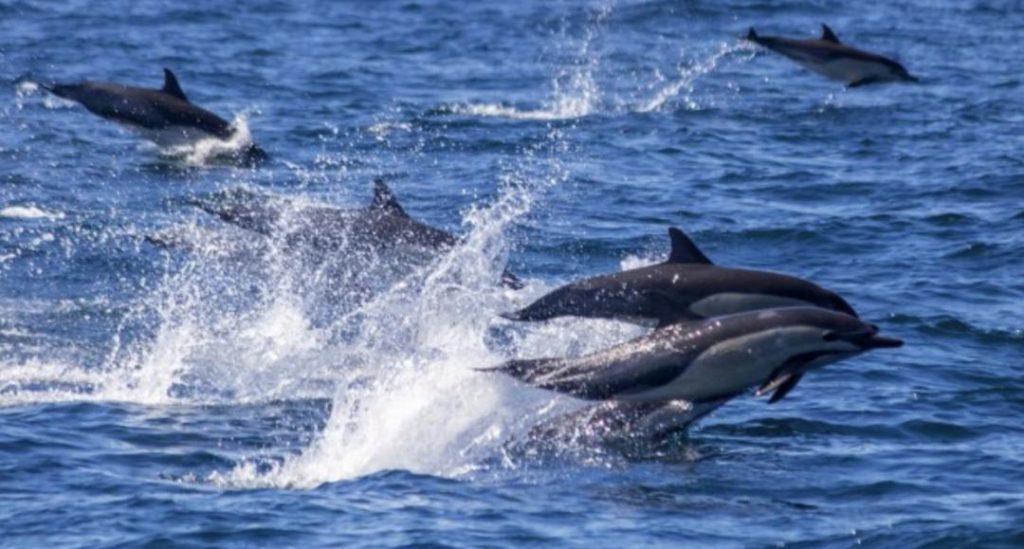
Dolphins & Whales Regularly Socialise with Each Other: Study
When we think of dolphins and whales, we often imagine them as solitary creatures, gliding through the ocean depths with little interaction with each other. However, a recent study has challenged this assumption, revealing that these marine mammals are more sociable than we thought. In fact, researchers from Griffith University have discovered that dolphins and whales frequently socialise and engage in playful interactions with each other.
The study, published in the journal Marine Mammal Science, analyzed videos and photographs of interactions between baleen whales and dolphins, covering 19 species across 199 separate events. The findings were nothing short of fascinating, showing that dolphins and whales regularly engage in playful and social behaviours with each other.
One of the most common interactions observed was dolphins swimming near the head of a whale. This behaviour was not only observed among different species but also demonstrated a mutual interest between the dolphins and whales. The study found that dolphins would often swim alongside whales, seemingly enjoying the company of each other.
Another interesting observation was the playfulness exhibited by the dolphins. Researchers noted that dolphins would often leap and splash around the whales, appearing to be having the time of their lives. This playful behaviour was not limited to one species, as dolphins from different species were observed engaging in similar antics.
One of the most involved dolphin species in these social interactions was the bottlenose dolphin. These intelligent and social creatures were observed engaging in a wide range of activities, from swimming alongside whales to playing with their own kind.
But why do dolphins and whales socialise with each other? The study suggests that these interactions may be more than just a simple game of follow-the-leader. By socialising with each other, dolphins and whales may be able to learn new skills, gain access to new habitats, and even improve their overall well-being.
In fact, the study suggests that these social interactions may be an important aspect of the marine ecosystem. By working together, dolphins and whales may be able to maintain a delicate balance in the ocean, ensuring the health and prosperity of both species.
So, what can we learn from this study? For one, it highlights the importance of preserving and protecting marine habitats. By safeguarding these ecosystems, we can ensure that dolphins and whales continue to thrive and socialise with each other.
Moreover, this study serves as a reminder of the complexity and diversity of marine life. Dolphins and whales are often viewed as solitary creatures, but this study shows that they are capable of forming strong bonds with each other.
As we continue to learn more about these fascinating creatures, we are reminded of the importance of conservation and research. By studying the social interactions of dolphins and whales, we can gain a deeper understanding of their needs and habits, ultimately working to protect and preserve these amazing animals.
In conclusion, the study of dolphins and whales socialising with each other is a fascinating reminder of the complexity and diversity of marine life. By continuing to study and learn more about these creatures, we can gain a deeper appreciation for their importance in the ocean ecosystem and work to protect and preserve them for generations to come.
Source:






